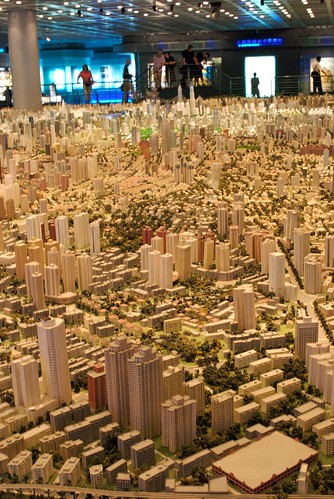The world grows ever more complex with rising and declining populations in various regions. Much of the infrastructure that’s already in place wasn’t designed around the needs of modern people who face high gas prices and dwindling resources, and finding ways to efficiently and effectively use the land that’s available is going to be one of the biggest challenges civilization will face in the 21st century. Luckily there are already examples of how to do things right, and with a combination of intelligence and technology there’s no problem that can’t be overcome.
1. Tactical Urbanism
One of the major roadblocks to making necessary changes is a lack of political will. Politicians either favor suburban and rural voters or the legislative process proves too slow to meet the needs of real people. That’s why many people have taken matters into their own hands, and with the organizational power provided through new technology they’re solving many of their problems through temporary architecture. While it may be a far cry from a solution to deep structural problems, it’s a necessary stopgap measure that’s essential to any long-term plan.
2. Organization
At first it may seem that getting people together isn’t a planning problem. Unfortunately none of the problems that face urban populations are going to work if there’s no sense of community, and it’s hard to foster that in a globalized technological world. That’s where Ben Barry and Lee Byron come in. They’re part of a group of designers in San Francisco who come together to try and solve some of the problems that accompany urbanization. The solution they proposed was a set of analog and digital bill boards that interact with each other and connect to online social networks like Facebook. Since anyone can post digital flyers and voice opinions, it solves many of the logistical problems that come with people living at many points within a vast city who work on different schedules.
3. Cooling
Urban environments are renowned for being quite a bit hotter than country towns. Fortunately there are solutions already being put in place. Gardens planted on the rooftops of high buildings absorb carbon and heat, and painting streets white is enough to cool a city by many degrees Fahrenheit. If predictions about global warming start coming true, this will likely be necessary to protect urban populations from the heat.
4. Energy
The energy grid is mostly powered by coal, and coal is a finite resource that pollutes the air and poisons the surrounding population. Solar panels are a fine solution for those who will install them, but many people need to be convinced that it’s worth the expense. One of the main barriers is the fact that there’s currently no way to store excess energy, but with a jump in battery technology it may not only be possible to store excess electricity but also release it to the grid. That means that people could make money from their excess energy. Van Jones has also begun an initiative to subsidize the installation of solar panels for low income homes in exchange for teaching people how to do it so they can find gainful employment in a growing field. When solving an urban problem can be linked to providing economic opportunity, people are quick to jump on board.
5. Density
Urban sprawl is one of the major issues that has to be dealt with going forward, but because of the implications some people aren’t ready to get on board. One of the biggest concerns is that tall buildings block their view of the sky, and faceless gray monoliths aren’t the kind of thing they want to see when they look up. Greater population density also means busier streets, and in places like New York it’s hard to sell that as a good thing.
That’s something that companies like ForestCity aim to address. Alexa Arena and Shannon Loew have proposed a solution that involves zig-zagging walkways and balconies that go between buildings and feature small trees and personal gardens. The walkways would allow people to move from building to building without cluttering the streets, and plants would provide something more interesting to look at than the flat architecture that defines modern cities.
Going Forward
Urban changes will likely occur as a result of necessity as opposed to a will to progress, but either way they will happen. Brilliant people from around the globe are sinking countless man-hours into solving the most pressing issues of urban planning, and with a little luck they’ll be able to turn the cities of the future into nearly Utopian environments for the people who live there.
Heidi Novak is a freelance blogger interested in the cities of tomorrow. If you’re interested in helping build those cities, you might want to check out urban planning degrees offered at schools such as University of Florida.



